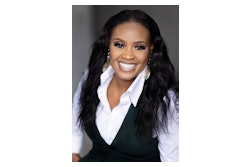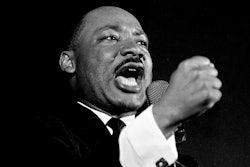When Judy Richardson was navigating her way through her freshman year at Swarthmore College in Pennsylvania, she got distracted from her full-ride, four-year scholarship by efforts to force the school to boost the wages of its all-Black cafeteria staff. She joined the campaign to help the workers.
Pretty soon, it was on to another battle for “justice” in Cambridge, Md., where Blacks were protesting the city’s racially segregated facilities. Another battle followed. Before long, the Tarrytown, N.Y., native found herself in Mississippi working alongside the Student Non-Violent Coordinating Committee. It was the summer of 1964.
With her mother’s reluctant blessing and despite her older sister’s protests, a 19-year-old Richardson joined other students from across the nation to help end Mississippi’s racist segregation laws.
“I had no sense of mortality,” recalls Richardson. “Somehow, I was able to get my mother and sister to understand this was important to me.”
Richardson, now 66, is a documentary film producer and college lecturer, a co-producer of the award-winning “Eyes on the Prize” documentary about the civil rights movement and a producer of the recent film documentary, “Scared Justice: The Orangeburg (S.C.) Massacre 1968.” She also is reveling in the success of a new book of personal essays she and friends from the movement have written about their experiences and those of dozens of other rank-and-file women of SNCC.
Published by the University of Illinois Press last September, Hands on the Freedom Plow, Personal Accounts by Women in SNCC, has sold approximately 4,000 copies and is in its fourth printing.
Richardson says she and her colleagues hoped the nearly 600 pages of essays by the 52 women — Black, White, Latina, young, old, urban and rural — would help fill the gaps in history books about the roles women played in the modern civil rights movement. Richardson spoke with Diverse to discuss the book’s background and significance:
DI: Whose idea was this book?
JR: It started with Jean Smith Young. She called me and others she had worked closely with in SNCC and suggested we do something to tell our story. Eventually, we became an editing committee of six. There had been several books by SNCC people; Deep In My Heart, a book by six White women in the movement; and several by men in SNCC. The feeling was to have the voices of the women, particularly Black women in the South. So, the call went out to 150, maybe 250 women. We had criteria. You had to have been on the SNCC staff or in a SNCC-related project, and you had to have been based in the South.
DI: How did the book evolve?
JR: It took 15 years. For the first 10 to 12 years, we were meeting about six times a year. We kept after people. All of us had points where we thought “It’s not worth all of this.” But then the SNCC
thing kicked in. We had a responsibility. It was so people could see it was not just Dr. King or “poor little Rosa Parks.” It was the leaders and the troops.
We wanted to give a sense of all these amazing people who gave strength to the modern day civil rights movement. These are the unfiltered voices of female movement activists. It absolutely transformed them. They tapped into a source of strength that many of them did not know they had.
DI: What did you learn most from your experience working with SNCC?
JR: The intelligence of regular folk. When you come from “under the hill” (the middle-class area of Tarrytown where most autoworker families lived) you think you’re a little special, taking AP courses and all. Then you come in contact with these amazing people who may have an eighth grade education. You have to say “Wait a minute, Richardson. Back up.” It wasn’t just the courage of these women. It was their intelligence. I wasn’t aware of all the ground that had been plowed before we got there. You had people who know the consequences of violating these segregation laws and they don’t stop what they’re doing. They had a sense of the world I did not have. I was humbled.


















